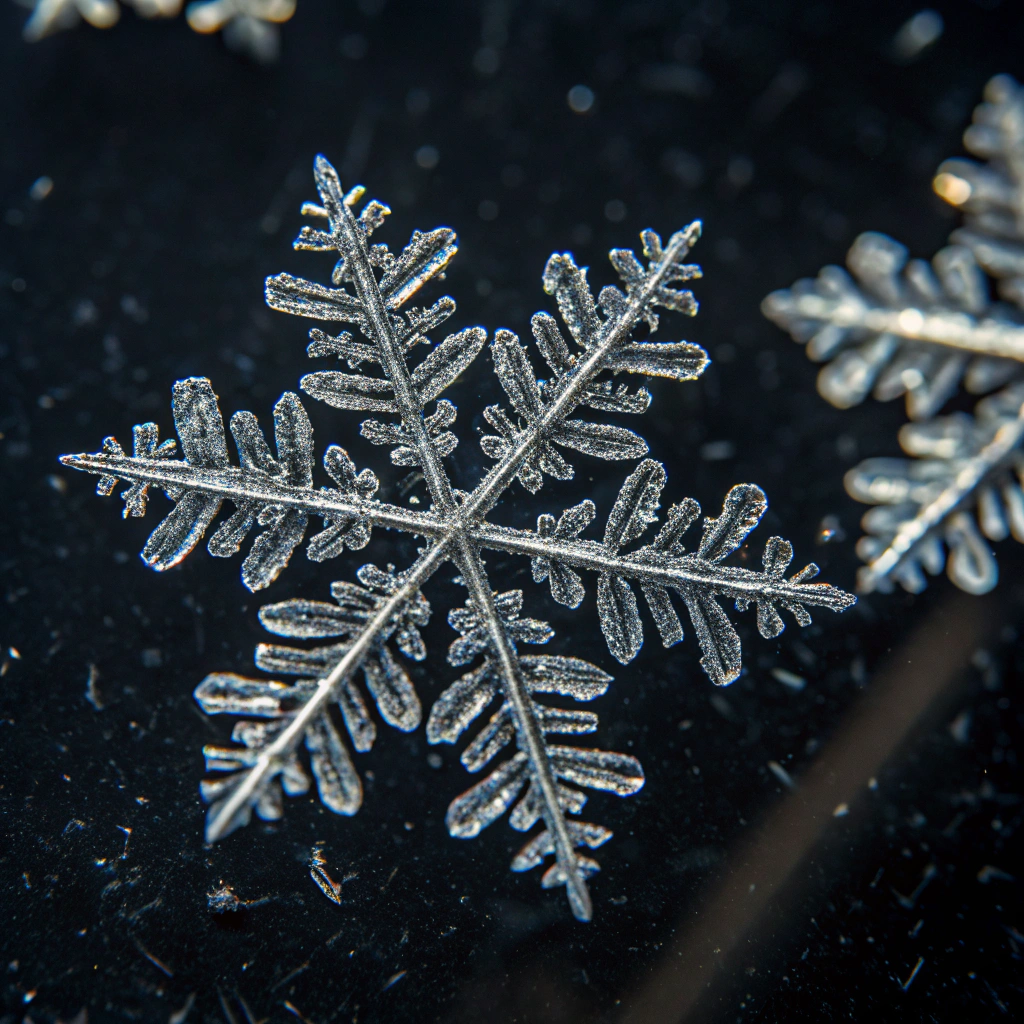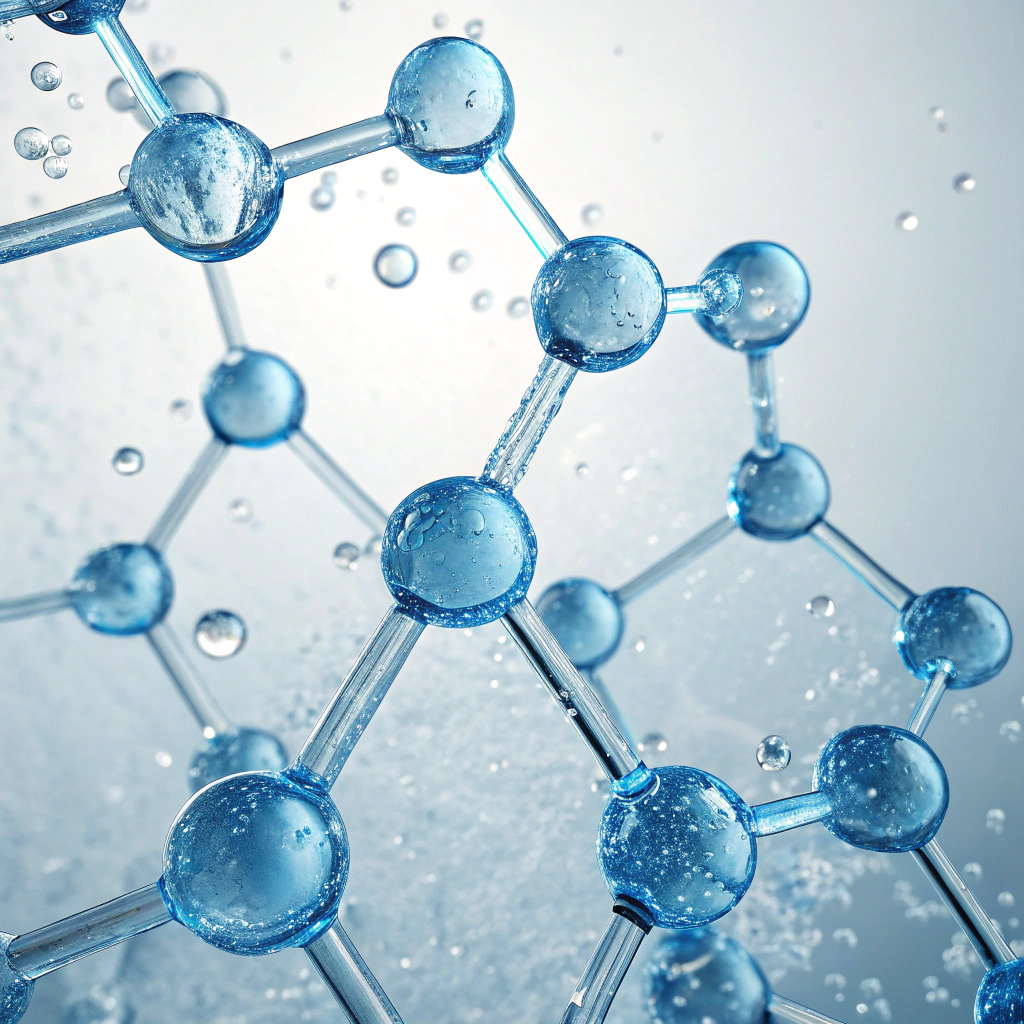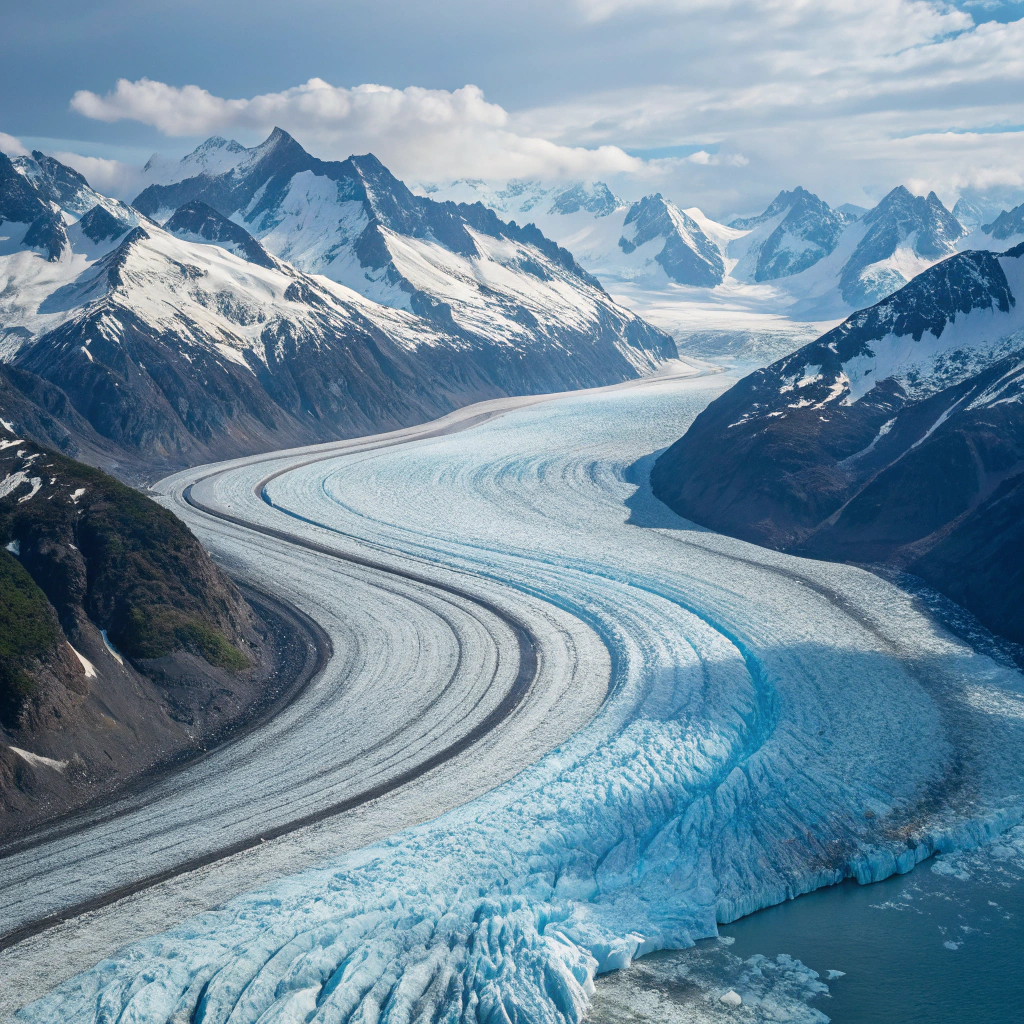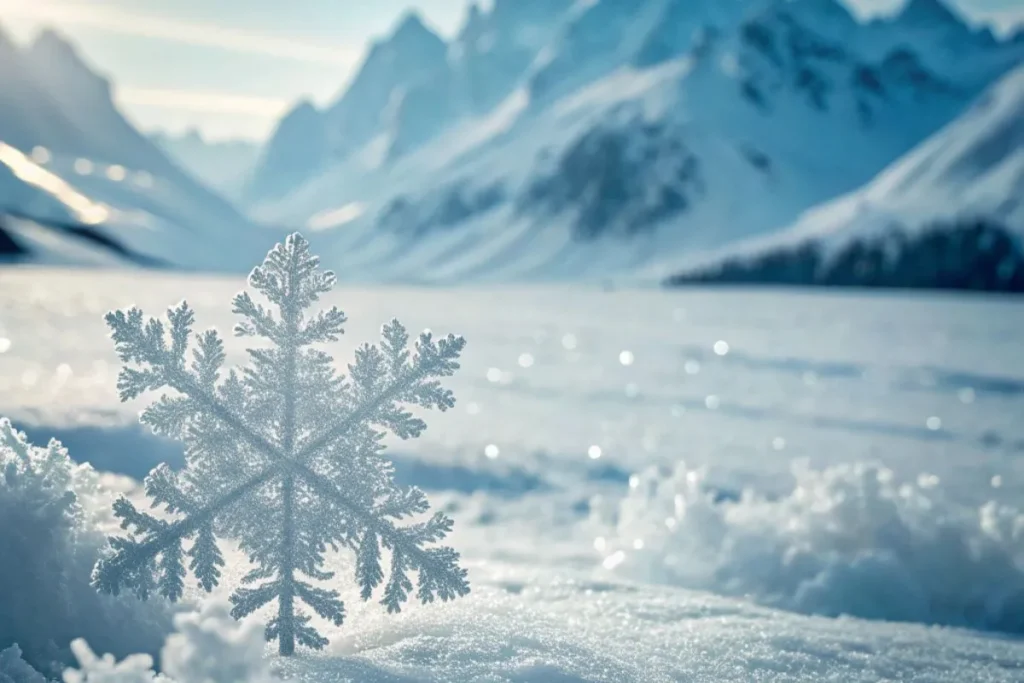The Science Behind Ice and Snow — Nature’s Coldest Wonders
- The Science Behind Ice and Snow — Nature’s Coldest Wonders
- What Exactly Are Ice and Snow?
- How Snowflakes Form — The Art of Cold Chemistry
- The Formation of Ice — Freezing, Crystallization, and Supercooling
- Inside the Structure of Ice — Why It’s So Unique
- Snow on the Ground — Metamorphism and the Making of Glaciers
- The Physics Behind Ice’s Slipperiness
- Environmental Importance of Ice and Snow
- Ice, Snow, and Climate Change
- The Beauty of Snowflakes — Nature’s Frozen Geometry
- Human Interaction and Cultural Significance
- The Wonders of Frozen Worlds Beyond Earth
- Conclusion — Science Behind Ice and Snow
Ice and snow have fascinated humans for centuries. From the silent sparkle of a snow-covered landscape to the breathtaking power of glaciers, these frozen forms of water hold scientific secrets that reveal how our planet works. Behind every snowflake and icicle lies a story of temperature, pressure, molecular motion, and environmental balance. In this article, we explore the science behind ice and snow—how they form, why they behave the way they do, and why they matter so deeply to life on Earth.
What Exactly Are Ice and Snow?
At their core, ice and snow are simply water in different physical states. When liquid water freezes, it becomes ice. When water vapor in the atmosphere crystallizes, it becomes snow. Both seem simple, yet the molecular structure of water gives rise to an astonishing range of patterns, textures, and behaviors.
The Molecular Mystery of Water
Water is made up of two hydrogen atoms and one oxygen atom (H₂O). The angle between the hydrogen atoms gives the molecule a slight electric polarity—one side positive, the other negative. This allows water molecules to form hydrogen bonds with each other. When water freezes, these hydrogen bonds lock into a lattice structure that is less dense than liquid water. That’s why ice floats.
This unique property is essential for life. If ice were denser than water, lakes and oceans would freeze from the bottom up, killing aquatic life during winter. Instead, ice floats, forming an insulating layer that protects marine ecosystems below.
The Difference Between Ice and Snow
Ice is a solid mass of frozen water. Snow, on the other hand, forms directly from water vapor that crystallizes in cold clouds. Each snowflake is an intricate ice crystal that grows molecule by molecule. The key difference lies in their origin: ice usually forms from liquid water, while snow forms from vapor through a process called deposition.
How Snowflakes Form — The Art of Cold Chemistry

Every snowflake begins as a tiny particle—often dust, pollen, or salt—floating high in the atmosphere. When the temperature drops below freezing and the air is saturated with water vapor, that particle becomes the nucleus of an ice crystal.
The Birth of a Snowflake
Water vapor molecules attach to the particle and freeze. As more molecules join, the crystal begins to grow outward in symmetrical branches. The conditions in the cloud—especially temperature and humidity—determine the shape of the snowflake.
- At around -2 °C, snowflakes often form thin plates.
- Between -5 °C and -10 °C, needle-like crystals dominate.
- Near -15 °C, the most famous stellar dendrites—the classic six-armed snowflakes—begin to form.
Even a small change in humidity or temperature alters the pattern, which is why no two snowflakes are ever identical. Each one records its own atmospheric journey.
Why Snow Is White
Although snow is made of clear ice, it appears white because of how light interacts with the ice crystals. Each crystal surface scatters light in multiple directions, and since all colors of visible light are reflected equally, the human eye perceives snow as white. Deep snow can sometimes appear blue because the ice absorbs more red light as light penetrates deeper.
The Formation of Ice — Freezing, Crystallization, and Supercooling
While snow forms in clouds, ice often forms on Earth’s surface—on lakes, roads, and rivers. The process of freezing might seem straightforward, but it involves remarkable physical behavior.
Freezing and Crystal Growth
As water cools to 0 °C (32 °F), its molecules slow down and begin to arrange themselves into a hexagonal crystal lattice. The process doesn’t happen instantly; impurities and dissolved gases in the water can delay freezing. Sometimes, pure water can cool below 0 °C without turning solid. This phenomenon is called supercooling.
When freezing finally starts, the process releases latent heat, which stabilizes the temperature until all the water has solidified. The ice crystals then grow outward, forming patterns depending on how fast the temperature drops.
Types of Ice in Nature
There are several natural types of ice:
- Frost: forms when water vapor freezes directly onto cold surfaces.
- Rime ice: occurs when supercooled water droplets hit a surface and freeze instantly.
- Glacial ice: created over years as snow compacts and recrystallizes under pressure.
- Sea ice: forms from freezing ocean water and includes brine channels that affect its density and strength.
Each type of ice tells a story about temperature, pressure, and the purity of the surrounding environment.
Inside the Structure of Ice — Why It’s So Unique

Ice exists in multiple forms, called phases. On Earth, the most common phase is Ice Ih, the hexagonal crystalline form. However, scientists have discovered more than 20 distinct phases of ice under varying pressure and temperature conditions—some exist deep within planets and moons far from Earth.
The Hexagonal Lattice
In Ice Ih, each oxygen atom is surrounded by four hydrogen atoms—two covalently bonded and two connected by hydrogen bonds. This creates a hexagonal structure that leaves empty space between molecules, explaining why ice expands and becomes less dense than water.
The Blue Glow of Glaciers
Glaciers and thick ice often appear blue because they absorb the red wavelengths of light more than the blue. As light travels deeper into the ice, the red components fade, leaving a rich blue hue. This same effect can be seen when sunlight passes through thick ice caves or icebergs.
Snow on the Ground — Metamorphism and the Making of Glaciers
When snow settles on the ground, it doesn’t remain static. Over time, snow crystals break down, melt, refreeze, and fuse together. This continuous transformation is called snow metamorphism.
The Life Cycle of Snow
- Fresh snow: Light, fluffy, and full of air pockets.
- Settling and compaction: Over days or weeks, snow becomes denser as air escapes.
- Melt–freeze cycles: Repeated warming and cooling cause layers to bond or create icy crusts.
- Firn formation: After months or years, compacted snow becomes granular ice called firn.
- Glacial ice: When firn is buried under more snow, it compresses further, forming glacier ice—dense, crystalline, and blue.
Snow Layers and Avalanches
Each snowfall adds a new layer to the snowpack, and not all layers bond well together. Weak layers—often made of loose, sugary snow—can collapse under stress, triggering avalanches. Understanding the physics of snow layers helps scientists and mountaineers predict avalanche risks and save lives.
The Physics Behind Ice’s Slipperiness
Have you ever wondered why ice is slippery? It’s not only because of melting. Scientists once believed that the pressure from your foot or a skate blade melted a thin layer of water. While pressure melting plays a role, the real reason lies in a “quasi-liquid layer” that naturally exists on the surface of ice.
The Quasi-Liquid Layer
Even at temperatures well below freezing, the outermost molecules of ice are less tightly bound and behave almost like liquid water. This microscopic layer reduces friction and allows objects—like ice skates—to glide smoothly across the surface. Frictional heating enhances this effect, creating the effortless slide we associate with ice sports.
Environmental Importance of Ice and Snow
Beyond their beauty, ice and snow regulate Earth’s climate, store freshwater, and shape ecosystems.
Albedo Effect — Nature’s Mirror
Snow and ice have one of the highest albedos of any natural surface, meaning they reflect most incoming sunlight. This reflection helps cool the planet by preventing excessive heat absorption. When snow and ice melt, darker surfaces like soil and ocean water absorb more sunlight, accelerating warming—a process known as the ice-albedo feedback loop.
Freshwater Reservoirs
Snowpacks act as natural water storage systems. In mountain regions, snow accumulates during winter and melts gradually in spring, feeding rivers and reservoirs. Millions of people around the world depend on this meltwater for drinking, farming, and energy generation.
Ecosystem Protection
Snow serves as an insulating blanket for plants and animals. Beneath a thick snow cover, soil temperatures remain relatively stable, allowing insects, rodents, and plants to survive harsh winters. Polar bears, arctic foxes, and seals rely on sea ice for hunting and breeding grounds.
Ice, Snow, and Climate Change
The frozen regions of our planet are among the most sensitive indicators of climate change. Rising global temperatures are melting glaciers, shrinking snow cover, and thinning sea ice.
Melting Glaciers and Sea-Level Rise
As glaciers retreat, the freshwater they once stored flows into the oceans, contributing to sea-level rise. Some glaciers in Greenland and Antarctica are losing mass at unprecedented rates, reshaping coastlines and threatening low-lying communities worldwide.
Changing Snow Patterns
Warmer winters mean more precipitation falls as rain instead of snow, disrupting natural water cycles. Earlier snowmelt can lead to floods in spring and droughts later in the season. The loss of consistent snow cover also affects tourism industries and mountain ecosystems.
Thinning Sea Ice and the Polar Crisis
Arctic sea ice has declined dramatically over the past few decades. Thinner ice forms later in the year and melts earlier, disrupting marine food webs. Animals like walruses and polar bears struggle to adapt as their icy habitat disappears.
The Beauty of Snowflakes — Nature’s Frozen Geometry

Few natural creations are as intricate as snowflakes. Each flake is a masterpiece of geometry, shaped by humidity, temperature, and chance.
The Six-Fold Symmetry
All snowflakes have six sides because of the molecular structure of ice. The 120-degree bond angles in water molecules naturally lead to hexagonal symmetry. As a snowflake grows, each arm develops independently, yet all follow the same fundamental pattern due to the uniform physics of crystal growth.
The Infinite Variety
While the basic symmetry is constant, the combinations of conditions that shape snowflakes are endless. Scientists have categorized more than 35 distinct types of snow crystals—plates, needles, columns, dendrites, and more. Every single one is unique, a frozen fingerprint of the atmosphere.
Human Interaction and Cultural Significance
Ice and snow have influenced human culture, technology, and imagination throughout history.
Survival and Adaptation
For ancient civilizations living in cold regions, understanding snow and ice meant survival. The Inuit built igloos—ingenious structures made of compacted snow—that trapped heat and provided insulation against extreme cold. Early Arctic explorers relied on ice for navigation and preservation of food.
Science and Innovation
Modern science continues to learn from ice. Glacial ice cores reveal thousands of years of climate history, preserving air bubbles from ancient atmospheres. Ice mechanics influence architecture, cryogenics, and even the storage of vaccines. The study of snow physics also aids avalanche prediction and winter-sports technology.
The Wonders of Frozen Worlds Beyond Earth
Ice isn’t confined to Earth. Across our solar system, ice plays a vital role. Europa, one of Jupiter’s moons, has an icy crust covering a vast subsurface ocean. Saturn’s moon Enceladus ejects plumes of water vapor and ice into space, hinting at geothermal activity beneath. Even the polar caps of Mars contain layered ice deposits that record its climate cycles.
Studying extraterrestrial ice helps scientists understand how water behaves under extreme conditions and offers clues about the potential for life elsewhere in the universe.
Conclusion — Science Behind Ice and Snow
Ice and snow are far more than frozen water. They are architects of landscapes, guardians of ecosystems, and silent storytellers of Earth’s climate. Their formation reflects the delicate balance of physics and temperature, while their disappearance warns us about the fragility of that balance.
From the graceful fall of a snowflake to the ancient weight of a glacier, ice and snow connect the smallest molecular bond to the grandest planetary system. They remind us that beauty, science, and survival often share the same element—frozen water, nature’s coldest and most extraordinary wonder.
